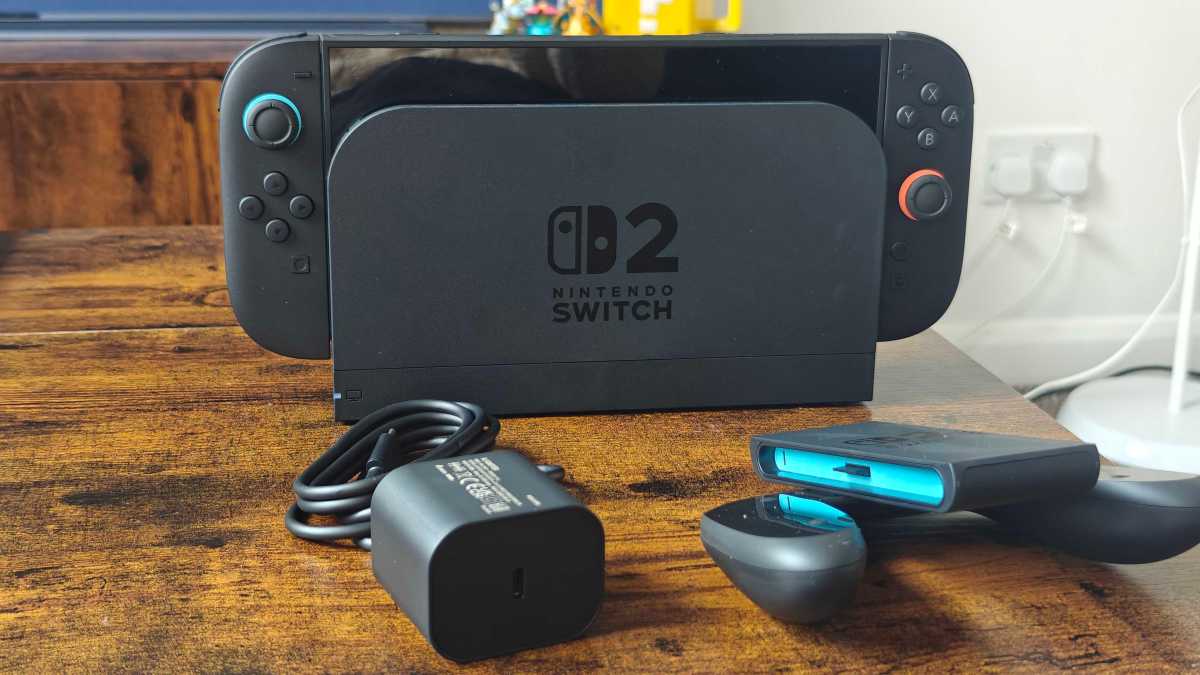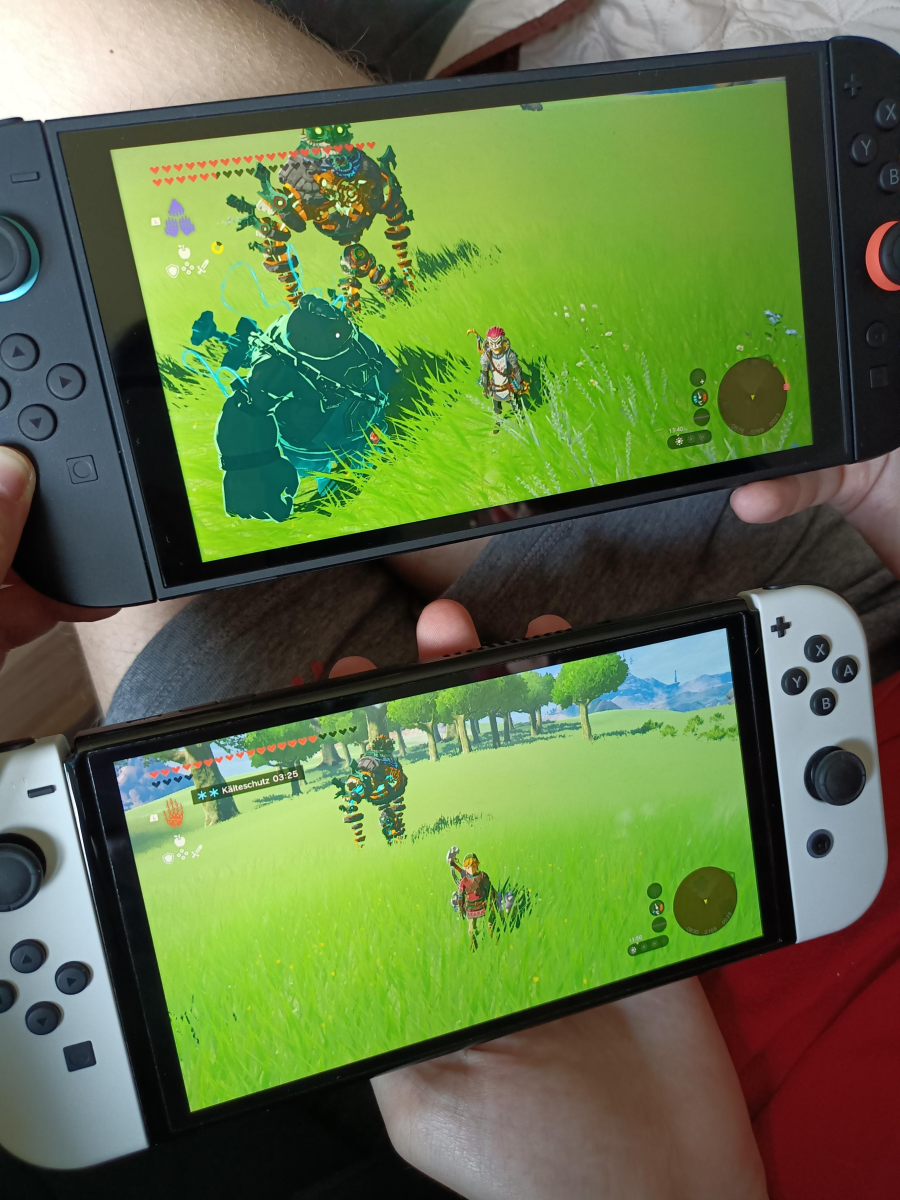Expert's Rating
Pros
- Powerful chip that brings the Switch 2 up to the level of a PS4 (Pro)
- Better frame rates and faster loading times
- Useful improvements such as HDR and 4K support
- Light and handy despite larger screen
Cons
- Low battery power
- No OLED screen and therefore no real HDR in handheld mode
- Console edges are slightly sharp-edged and uncomfortable
Our Verdict
The Nintendo Switch 2 is a smart and meaningful upgrade, offering better graphics, faster load times, and modern features like HDR. But weaker battery life, an LCD screen, and a high price make it more suitable for hardcore fans than casual players.
Price When Reviewed
This value will show the geolocated pricing text for product undefined
Best Pricing Today
Price When Reviewed
466 Euro
Best Prices Today: Nintendo Switch 2
The Nintendo Switch 2 officially launched on June 5th and aims to win over both longtime fans and newcomers. Rather than reinventing the wheel, Nintendo has opted to modernize the familiar concept of the original Switch.
With significantly better hardware and detailed improvements, the Switch 2 feels like a thoughtful upgrade. But much like the PlayStation 5 Pro, the big question remains: Is it worth it and who is it really for? We break it down in our review.
Nintendo Switch 2: A big boost in performance
This time around, Nintendo installed more powerful hardware in the Nintendo Switch 2. Together with Nvidia, Nintendo installed a specially customized processor and GPU, which together deliver around ten times more power than the original Nintendo Switch.
Both old and new titles benefit from this and now run more smoothly and with shorter loading times, even if not always at 60 fps. While titles such as Mario Kart World definitely reach the golden frame rate mark, other titles such as Cyberpunk 2077 are even more demanding, which means they tend to run at 30 to 40 FPS.
However, the fact that Cyberpunk runs so well on the Switch 2 is a success in itself. And even with games like Legend of Zelda: Tears of the Kingdom, the higher FPS figures work wonders to significantly enhance the gaming experience.
The use of DLSS plays a large part in making such performance possible on the Switch 2. Nvidia’s upscaling technology can generate more frame rates with the help of AI. However, image artefacts do occur from time to time as a result of the AI calculation, but these usually occur in the background and aren’t noticeable.

The Nintendo Switch 2 comes with the console itself, two joy cons, a controller holder, the docking station and a power supply unit including charging cable.
Hannah Cowton-Barnes / Foundry
In terms of resolution, the Switch 2 now delivers 1080p in handheld mode, which also ensures that you can feel a significant improvement in quality. In TV mode, however, it depends on the game which resolution is possible. While titles such as Mario Kart World run natively at 1440p, other games are only upscaled to this value.
For the first time it’s possible to upscale titles up to 4K resolution. This is a significant improvement compared to the first Nintendo Switch, which reached a maximum of Full HD. This is remarkable, especially as the Switch 2 also supports HDR, which makes for really beautiful scenes in TV mode.
Nintendo has also given the Switch 2 a full 256 GB of internal memory, which is significantly more than the meagre 32 GB of the first Nintendo Switch or 64 GB of the OLED Switch. This should give most people enough space to transfer their game library (or fill it with new titles). If required, the memory can also be expanded with a microSD card.
Incidentally, not all microSD cards are now compatible with the console. With the Switch 2, the memory card must fulfil the microSD Express standard.

The Nintendo Switch 2 is larger than its predecessor, and also larger than the OLED Switch (not pictured).
Hannah Cowton-Barnes / Foundry
In terms of battery life, the Nintendo Switch 2 takes one step forward and two steps back. Even though the battery now delivers 5220 mAh instead of 4310 mAh, the battery life is noticeably shorter due to the higher performance. For demanding games, the console lasts just two hours, which can be a major disadvantage when traveling. At best, the console lasts six and a half hours, which is still not too much.
The Nintendo Switch OLED, by comparison, managed four and a half to nine hours of battery life. So if you often play in handheld mode, you’ll get significantly less playing time here. Of course, this is less relevant in docked mode on the TV, but it still feels like a step backwards.
The Switch 2 makes perfect sense as an upgrade, as it delivers many improvements that Nintendo titles urgently need… Unfortunately, the Switch 2 has not become a must-have despite some useful improvements.
Nintendo Switch 2: Build quality and handling
As usual from Nintendo, the workmanship of the Nintendo Switch 2 is of a very high standard. Everything looks very high-quality and the console feels really good in the hand, despite the larger form factor. Not much else has changed compared to the first Switch.

In terms of design, the Switch 2 is very well done.
PC Welt / Foundry
The joy cons are also very similar, apart from the fact that they are now magnetically attached to the console. This works very well. However, be careful not to accidentally pinch a finger because that hurts like hell.
If necessary, the joy cons can either be released at the touch of a button or you can pull them off directly with a little force. This is only recommended if you have a firm grip on the console, otherwise it will quickly end up on the floor. Conveniently, it’s also possible to put the joy cons on upside down. They then work just as well and the console simply rotates with them.
Apart from that, there are only a few changes to the familiar design. The console is less colorful, as there are only a few blue and red accents instead of the completely colored joy cons on the first Nintendo Switch. However, we hope that Nintendo will release a few chic special editions in the future to spice things up a bit.
Incidentally, Nintendo has not changed the sticks on the Nintendo Switch 2, which can still lead to the infamous stick drift. An omission that many rightly criticize, as the problem has been known for years.
Nintendo Switch 2: The screen falls short
We were somewhat disappointed when Nintendo announced that the Switch 2 would only have an LCD screen and not an OLED screen like the Nintendo Switch OLED. This was a real highlight and made games on the console look even more colorful and stylish, not to mention the better contrasts.
Although Nintendo has installed a really good LCD screen (which at 7.9 inches is also significantly larger than on the first Switch), it still can’t keep up with a good OLED screen. The colors look good, but in a direct comparison you can tell that the OLED Switch is still ahead.

Melden Sie sich an, um einen Kommentar hinzuzufügen
Andere Beiträge in dieser Gruppe

Frying a computer component with static is one of those things that v



AMD’s hardware teams have tried to redefine AI inferencing with power

AI-generated summaries are low-hanging fruit for apps and services th

Flash drives are kind of dull as a topic, the modern descendant of fl


